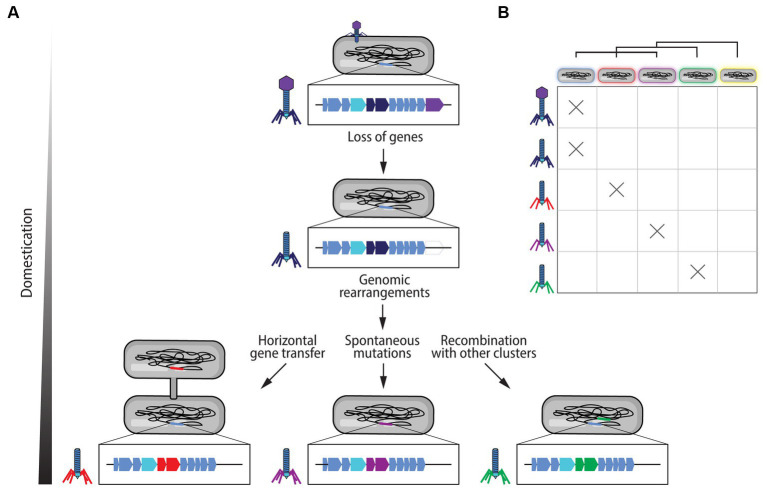Figure 3.
Domestication of prophage gene clusters into extracellular contractile injection systems (eCISs). (A) Following the insertion of the genome of a phage into the host bacterial genome, the prophage sequence becomes susceptible to genetic loss giving rise to eCIS loci. Genomic rearrangements and degradation, in addition to spontaneous mutations, can lead to changes in eCIS specificity and loss of certain genes. These clusters can also recombine with other phage-like clusters within the bacterial genome. Horizontal gene transfer can also lead to the acquisition of new structures. These differences are illustrated with the example of tail fibers changes. (B) Through these mechanisms, either alone or concomitantly, prophage gene clusters can evolve into new CIS gene clusters with different activity spectra. These changes in spectrum are represented by the different colors of the tail fibers and the lipopolysaccharides coating the different bacteria, where the same color symbolizes a potential interaction between a target bacterium and an eCIS particle. The yellow bacterial cell represents a bacterium that is resistant to all of the viral particles shown, but could be a potential future target that eCIS particles could evolve to attack.

